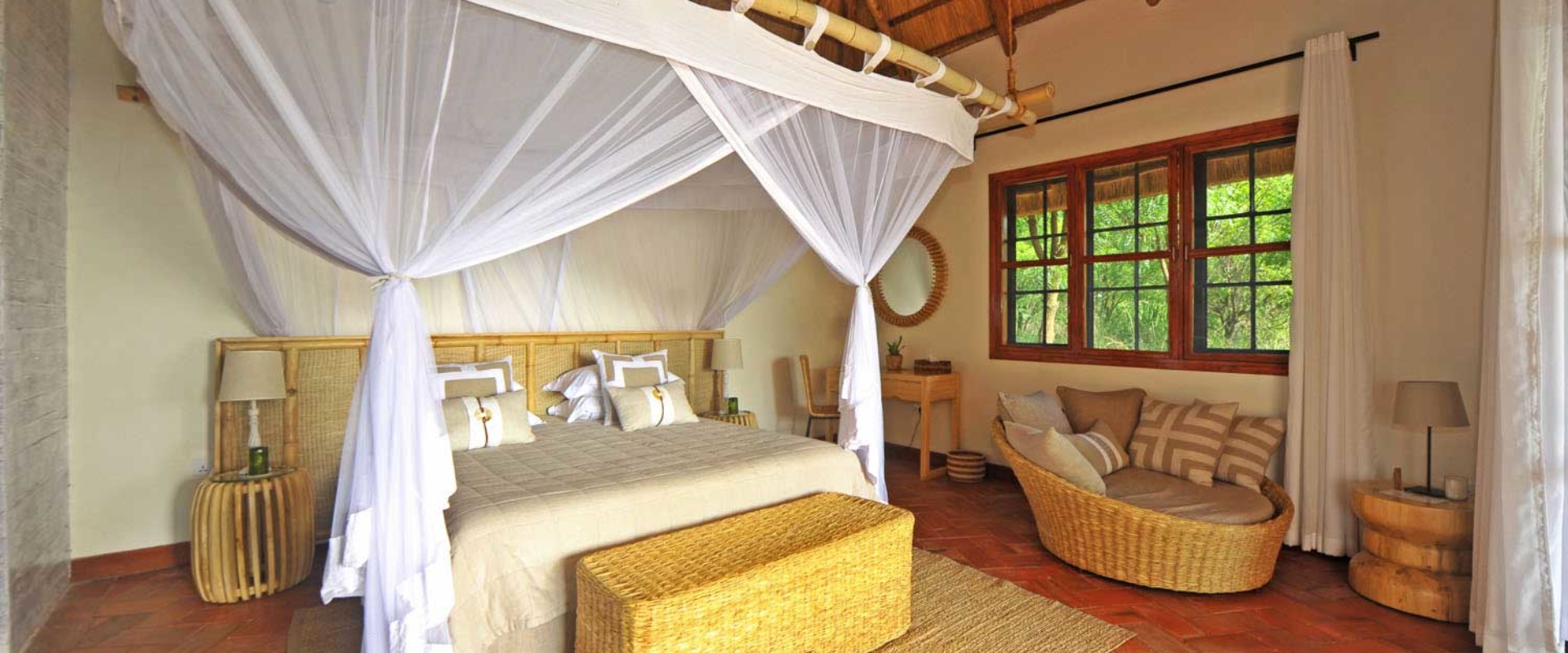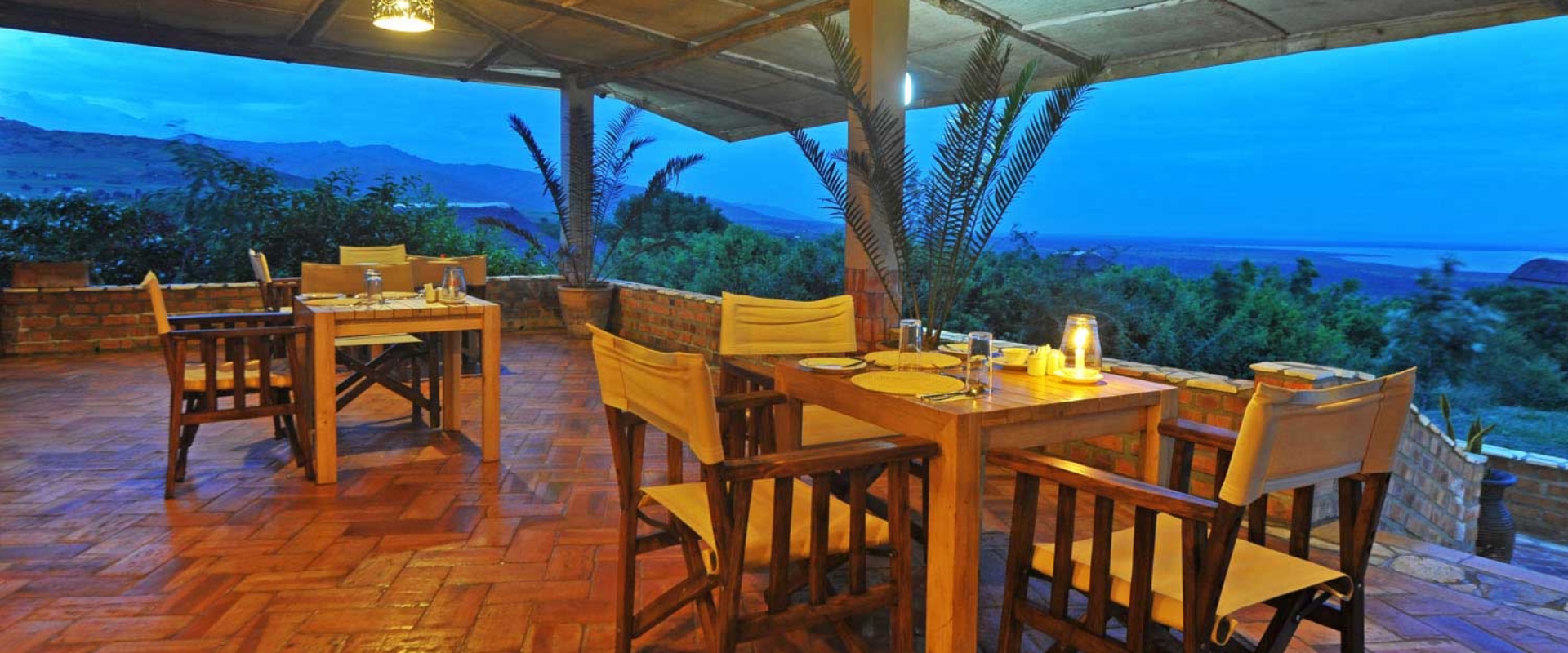Elephant Plains Lodge

Elephant Plains Lodge is a brand new luxury lodge located on the most spectacular view point in the whole of Queen Elizabeth National Park. Perched 941 metres above sea level, high upon the western escarpment of the Albertine rift in the north east of the park, the lodge offers panoramic views stretching for miles over the huge open grasslands to Lake George.

Set in 80 acres of pristine wilderness, only 2 minutes to the park gate, nowhere else here can you sleep closer to the equator (N*S 0.0,25.172) with views of the equator monument visible from all around the lodge. Nestled next to beautiful Lake Kikorongo this is where the open plains merge into the crystal waters and seeing large numbers of Elephants coming to drink from the water, hence the lodge’s name.

A short drive to the Kasenyi plains offers open savannah filled with various wild animals. This area has fantastic game viewing, a huge number of grassland birds and is a major breeding ground for the Ugandan Kob which readily attracts lions and other big cats to the area. The open plains and large number of wildlife mean photographic safaris are extremely rewarding.

Activities to do while at Elephant plains
Game drives at Kasenyi Plains
The northern sector of the national park is called Kasenyi, or better known as the “Kobs Mating Ground”. In this open savannah area you will find hundreds of Uganda kobs. The kob is an elegant antelope, similar to the impala, which lives in harems up to twenty females, leaded by one dominant male. Consequently, it is not exceptional to encounter a hungry lion in this area, waiting for his chance to pounce on one of the unsuspecting animals. Big herds of buffaloes, giant forest hog, warthogs, monitor lizards and sometimes a lonely elephant can be seen during a game drive in Kasenyi as well.
Wildlife viewing at Mweya Peninsular
The Mweya Peninsula is one of the best places to start Nyamunuka Crater Lake your game drive from. The forested area offers a great variety of game tracks and at the same time it hides many narrow natural trails, created by the inhabitants. A game drive in this area will give you a fair chance of finding the elusive leopard and watching herds of elephant. Also waterbucks, warthogs, hyenas and the giant forest hog are regularly seen around the Mweya Peninsula. As it is located closely to the shores of the Kazinga Channel do not be surprised when you encounter a hippo grazing peacefully between the bushes, in the early morning or evening. Many bird species like the Black Bee-eater, Verreaux’s Eagle-Owl and Malachite Kingfisher inhabit this isolated peninsula as well.

Boat safari on Kazinga channel
This famous 32 kilometers long channel is a natural link between Lake Edward and Lake George and is said to contain the world’s largest concentration of hippos. A boat trip will offer you the opportunity to view hundreds of hippos laying lazy in the water or plunge timidly when you pass. Crocodiles will be found motionless at the shores and also buffaloes and waterbucks come to the water to cool off. Occasionally you may see an elephant coming to quench his thirst. Moreover, the Kazinga Channel is a true birders paradise as it is home to hundreds of (water) bird species. You may spot Pelicans, Fish Eagles, Kingfishers, Cormorants and the bright colored Saddle-billed Stork.
Exploration of the crater lakes
One of the most scenic parts is the impressive crater area in the northwest region of the park. Formed by volcanic activity thousands of years ago, you can now explore a series of dramatic craters and dry calderas in the hilly landscape, offering stunning views of the park and its surroundings. The birdlife is spectacular, with large flocks of flamingos, but also buffaloes and other wild animals come to drink here
Chimp Tracking in Kyambura wildlife reserve
A real Tarzan territory can be in the northeast of the national park. This is where the savannah grassland suddenly ends into an impressive gorge of 100 meters deep and 16 kilometers long. The steep slopes form by the water of the Kyambura River. This makes a beautiful contrast with the valley that is covering lush riverine forest. A walking safari takes you along the river, deep down into the heart of the gorge. Follow the sounds of the chattering Tree climbing lion in Ishasha, chimpanzees, red-tailed monkeys and other primates. Or try to catch a glimpse of the colorful forest birds, while you find your way through the thick bushes, with a blanked of dense forest canopy raising high above you.
Forest walks in Maramagambo Forest
A part of Queen Elizabeth National Park consists of tropical rain forest including the legendary Maramagambo Forest. It is one of the largest forests in Uganda, with different walking trails traced out. A guided nature walk will lead you through the lush primary forest, home to a large number of primates, butterflies and bird species. Baboons, vervet monkeys, black-and-white colobus monkeys and even chimpanzees can be hiding in the trees or down in the bushes. Deeper into the forest you will find the Bat Cave, a large cave which serves as a shelter for thousands on Egyptian Fruit Bats and several pythons that prey on these bats. Nearby is also the tranquil, picturesque Blue Lake. As the name implicates, it is famous for the intense blue color of the water.
Finding tree climbing lions in Ishasha
Follow the road to the southwest of Queen Elizabeth National Park and you will enter the remote plains of Ishasha. The landscape slowly changes as you pass large herds of Uganda kobs, topis and buffaloes, grazing peacefully in the savannah highlands. In the far end, the winding Ishasha River forms the natural border between Uganda and DR Congo. Here you will find hippos at the shores, lazy drifting with the stream. The birdlife enriches the trees along the river, while curious colobus monkeys and baboons often come to take a look at the visitors. The highlight of this area, however, is the tree climbing lion, who likes to take a nap in the upper branches of huge fig trees. So keep your eyes open when your guide takes you for a search along one of the circuits in the southern sector!
Cross the Equator
A popular photo stop is the Equator. The spot where this imaginary line crosses the national park has two large circles. Not far from the Equator is the Queen’s Pavilion. This was a temporary shelter to host Queen Elizabeth II and the Duke of Edinburgh during their visit in 1954. A new information center on the site includes internet facilities and a coffee shop.







